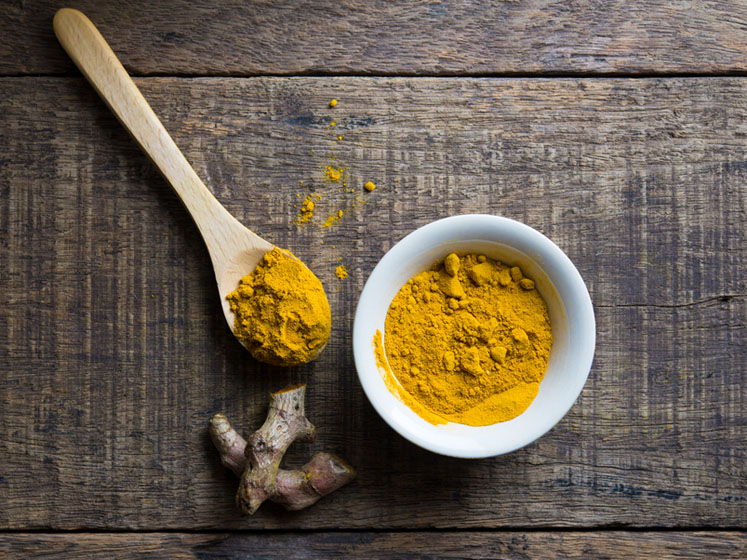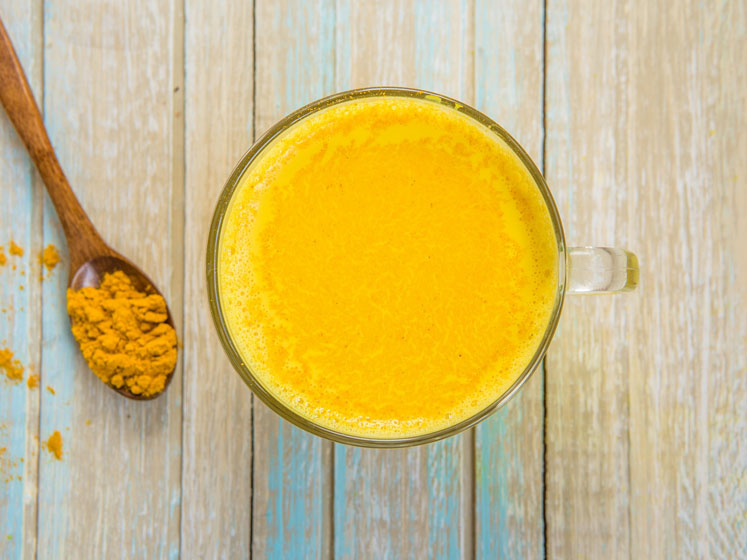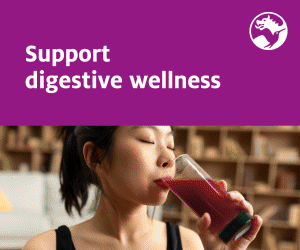Although much has been done to both optimise and standardise the plasma content and retention of this potent constituent, what results from the remainder of what is consumed — but not absorbed — remains somewhat of a mystery.
This article submits, however, that microbiome manipulation and gut-brain axis interactions, both unencumbered by the necessity of absorption, are the unchartered but necessary territory of curcuminoid pleotrophism.
Bioavailability enhanced curcuminoid options require milligram to multigram doses to produce clinical benefits. Contrastingly, these same formulations deliver pico- to microgram levels of curcuminoids to the plasma, which even in their infinitesimally small quantities are much higher than what can be obtained from standardised extracts of curcumin (whereby no formulation strategy has been employed).
This conundrum has begun to convince enquiring minds that, instead of systemic or even brain-specific bioactivity depending solely on what portion of curcuminoids is absorbed, that local, gut-level nervous, endocrine, microbial and/or metabolic communication drives a significant portion of curcumin’s clinical benefits.
In fact, Scazzocchio et al. intimates that a better understanding these gut-derived communication pathways will lead to a better, broader definition of bioavailability.1
Intuitively, a more comprehensive definition will likely add to the current, comparative plasma parameters (area under the curve and maximal concentration) by which the industry defaults to when discerning efficacy related benefit.
The gut-brain axis or enteric nervous system is a complex neural network with sensory and motor functions that helps the gut to “experience” the outside world (what is ingested, what traverses the length of the gut lumen) via internal communication pathways that allow for local-level and brain-level interpretation and response.
The enteric nervous system communicates along three connection pathways: neuroimmune, neuroendocrine and neurometabolic signalling.2
Neuroimmune signalling receives information from resident or transient immune cells, sampling the environment of the gut lumen and presenting information to the nervous system. The pathway is mediated by chemical messengers (cytokines).
The neuroendocrine pathway experiences its environment by way of neuroactive peptides, secreted by resident enterochromaffin (EC) cells that appear indiscriminately along the gut wall.
These EC cells are sensory cells, likened to those in the nose, that perceive the composition of the gut lumen and respond through the output of neuroactive peptides, or neurotransmitters, such as serotonin and norepinephrine.

These neuroactives are well-known local modulators of intestinal activity, but also influence both mood and cognitive output. Finally, the neurometabolite signalling pathway, via the vagus nerve, also picks up information about the metabolic output from the microbiota of the gut.
The trillions of micro-organisms that inhabit the digestive tract, like all living systems, consume and eliminate from and within their environment.
The elimination pattern and co-ordinate response, particularly as it results from both the type of bacteria that predominate as well as the products of their consumption, produces metabolites or excretory material such as short chain fatty acids or, in the presence of curcuminoids, certain intermediates including tetrahydrocurcumin.
A variety of chemicals, pungent molecules and inflammatory responses have been shown to trigger channels within the EC cells of the neuroendocrine pathway.3
Medicinally speaking, substances such as gingerols from ginger, cinnamaldehydes from cinnamon, forskolin from the Indian Coleus, allin from garlic, capsaicin from chilies and curcumin from turmeric have been evaluated for their ability to modulate local serotonin production by EC cells in the gut.4
Real-world evidence
Wang et al. found that curcumin, among 14 other tested food chemicals, stimulates the most serotonin (5-HT) from cultured EC cells. Notably, they also respond to and have an effect on bacterial metabolites and populations, similar to the neurometabolite signalling pathway.
Recent research has established a bidirectional relationship between EC cell serotonin production and gut microbiota.5 Although secretion of 5-HT can increase gut colonisation of specific microbiota, reversibly, changes to the microbiota can encourage greater EC cell and peripheral serotonin concentrations.
These triggered responses, in terms of the potency of curcuminoids present in the gut lumen beyond what has been absorbed to act systemically, describe a profound link between dietary intake, unabsorbed curcumin and neurotransmitter production.
While representing only 1% of intestinal cells, EC cells actually produce 90% of the body’s serotonin. Some of this serotonin acts locally to the gut, aptly named the “second brain” given its effect on motor and sensory effects, including modulating local pain sensation, feelings of nausea, gut motility, secretion, appetite and satiety.
Some of this gut-produced serotonin can also enter the general circulation and have effects on newly described mechanisms of peripheral serotonin production, including glucose homeostasis and lipid metabolism.5
Only 5% of serotonin is actually produced centrally from tryptophan precursors to effect mood, cognition and sleep; and whereas serotonin produced peripherally is not thought to cross the blood-brain-barrier, the bidirectional role it plays in modulating microbiota has been established as a likely link.
The neurometabolite signalling pathway of the gut-brain axis, expansively termed the microbiome-gut-brain axis, describes the role of metabolites derived from microbiota that can influence primary brain activity.
The potential link between curcumin, as a strong secretagogue of EC-derived serotonin and the role of serotonin in promoting microbiota with the capacity to produce metabolites that are brain-health benefiting, is interesting and warrants additional study.
One such randomised, double-blind, placebo-controlled study on Curcugen, a patented, dispersible, bioavailability enhanced curcumin formulation (50% curcuminoid), investigated the connection between the intake of this formula, its central nervous system modulating role in anxiety and depressive symptoms, and its impact on gut microbiota after 8 weeks of consecutive intake at 500 mg per day.6
The subjects of this study were not clinically diagnosed with gut or mood disorders; however, they were recruited based on self-reported, recurring digestive complaints and symptoms of anxiety as measured using standardised questionnaires.
Although both digestive complaints and mood perturbances were significantly improved in the Curcugen group compared with the placebo, no substantive changes in the intestinal microbiota were observed between the groups.
This could be derived from the exclusion of subjects with previously diagnosed gastrointestinal disease, which could be more strongly associated with pathological alterations in microbiome diversity.
Further, there were limitations to the detail of the microbial analysis that was performed, such as species or strain level changes of the bacteria that were identified.
The study also did not exclude for subjects potentially taking the contraceptive pill or recruit specifically for an overweight/obese phenotype, which has been previously associated with reduced microbial diversity and pathological colonisation.

THC metabolism
Like fibre and other gut microbiota substrates that result in powerful, health-promoting benefits, curcumin has been identified as a type of microbial “food” that also results in powerful intermediates/metabolites.7
One of curcumin’s most powerful metabolites is tetrahydrocurcumin (THC), which exhibits similar physiological and pharmacological properties as the active form of curcumin in vivo.
The key difference being that whereas curcumin is mostly a lipophilic molecule with limited solubility, THC displays enhanced solubility at physiologic pH levels, as well as a longer half-life.8
THC is formed both by microbial transformation along the gut wall, as well as its absorption-associated formation by phase-1 enzymes in the liver. Specific gut species have been associated with preferred THC metabolism, as have certain formulation strategies.
Although a variety of mechanisms may be involved in the formulation-enhanced absorption of curcuminoids, thus availing greater intestinal absorption and phase-1-induced THC production, specific formulation benefits derived from physical property modifications such as surfactant surface stabilisers, which are purported to enhance aqueous stability and reduce auto-oxidation, may be at the root of enhanced, localised, gut-wall oriented microbial THC metabolism.9
Given the involvement of orally administered curcuminoids in peripheral and central microbiome-gut-brain axis communication, the description of “a complex two-way system in which the gut microbiome and its composition, are factors that preserve and determine brain health” aptly justifies the position of this paper and should entice further exploration into this topic.
References
- https://doi.org/10.3390/nu12092499.
- https://doi.org/10.1002/bies.201800268.
- http://dx.doi.org/10.1016/j.cell.2017.05.034.
- https://doi.org/10.1021/acs.analchem.0c02016.
- https://doi.org/10.1016/j.biocel.2020.105776.
- https://doi.org/10.1186/s12906-021-03220-6.
- https://doi.org/10.3390/ijms21031055.
- https://doi.org/10.3390/ijms22010212.
- https://doi.org/10.3390/molecules25061397.




